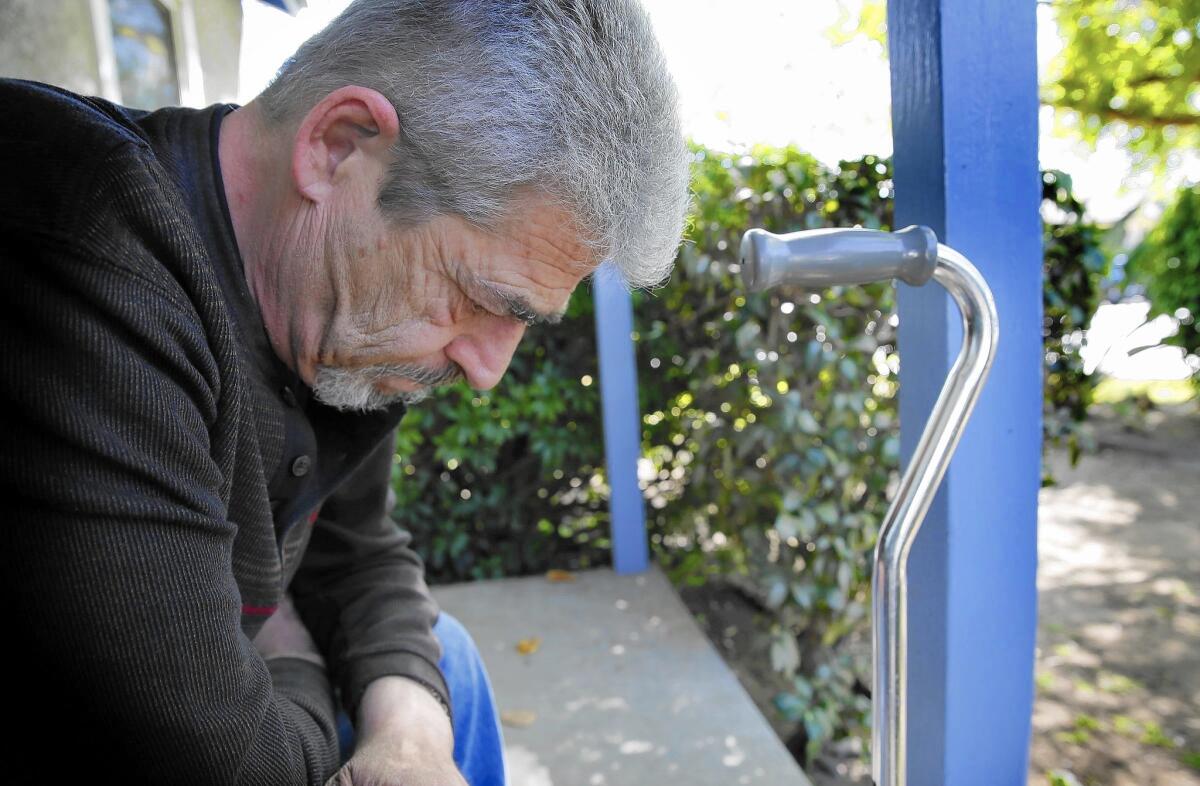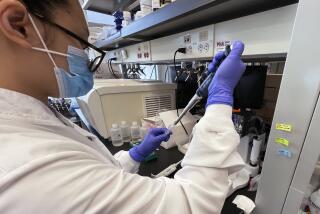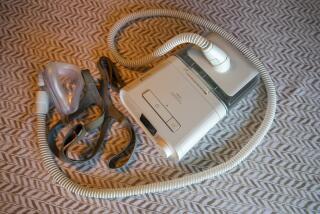Hospitals step up search for best way to clean troubled scopes

- Share via
Three months after deadly superbug outbreaks sparked alarm nationwide, U.S. hospitals are still searching for how best to clean a controversial medical scope and keep patients safe.
Federal regulators have declined to pull the difficult-to-clean duodenoscopes off the market, and there’s no indication that manufacturers can quickly redesign the reusable devices, which are employed in nearly 700,000 procedures annually.
Absent clear guidance from health officials, hospitals are resorting to a wide variety of cleaning and testing approaches — including some that remain unproven.
Doctors and hospitals are hoping to get more answers Thursday and Friday from a federal advisory panel that’s being asked to recommend ways to ensure patient safety during ERCP, or endoscopic retrograde cholangiopancreatography.
The Food and Drug Administration, which regulates medical devices, has been sharply criticized by lawmakers and patient advocates for not warning hospitals sooner about the well-documented threat of scope-related infections.
Olympus Corp. controls 85% of the specialty endoscope market in the U.S., and its devices have been linked to six of the nine recent superbug outbreaks, including at UCLA’s Ronald Reagan Medical Center, where two patients died this winter.
This month, Olympus began shipping a tiny new brush to hospitals to help clean the troublesome tip of these scopes, where dangerous bacteria can become trapped inside an elevator channel that holds guide wires and catheters.
But many experts are skeptical that the company’s response will do much good.
“It’s easy to put out a new brush,” said Michael Drues, an independent regulatory expert from Grafton, Mass., who consults with medical companies. “But is that really a solution?”
Many patients, including Gary Haber, have relied on ERCP procedures for years to cope with serious and painful ailments.
The 56-year-old Army veteran from Norwalk has had these slender scopes threaded down his throat several times so doctors could implant stents in his bile duct to help combat a chronic liver condition. Now he says he would opt for a more invasive surgery, even with the risk of complications.
“I don’t really want to have the scope done until they figure all this out,” Haber said. “I am frightened as hell to be honest. How are they cleaning them from patient to patient?”
Doctors such as Ram Chuttani are scrambling to allay those fears.
Chuttani is director of endoscopy and chief of interventional gastroenterology at Beth Israel Deaconess Medical Center in Boston, one of the leading ERCP hospitals in the country. The hospital performs nearly 2,000 procedures a year.
He and his colleagues are testing three cleaning methods for duodenoscopes, and they want to expand the research to other major hospitals.
One approach is the standard protocol of cleaning the scopes by hand before running them through an automated reprocessing machine for disinfection.
The next alternative is to repeat that cycle twice. The third approach is standard cleaning plus gas sterilization.
Researchers will test the scopes for contamination and compare each approach.
Chuttani said doctors are also trying to determine the extent of the problem with tainted scopes beyond the outbreaks that have been reported involving antibiotic-resistant superbugs.
The CRE superbug, spread on Olympus scopes at UCLA and Cedars-Sinai hospitals, can kill up to half of infected patients.
Many experts say the infection rate may be far higher because cases have gone undetected or unreported.
Last week, the FDA said it had received 142 reports of possible patient infections and contamination related to ERCP scopes since 2010. Each report could involve numerous patients.
“We realize outbreaks of extremely resistant organisms have been reported in the past, but very infrequently,” Chuttani said. “Was it because we weren’t paying attention or because the organisms are becoming more resistant to antibiotics?”
The Boston hospital’s extensive experiment may be more than many hospitals are prepared to try. Beth Israel is doubling its inventory of Olympus duodenoscopes to 22 because the devices will be out of service longer for cleaning and testing.
Virginia Mason Medical Center in Seattle made a similar commitment and spent about $1 million to purchase more Olympus scopes and conduct more testing.
It has adopted a 48-hour surveillance system in which scopes, once cleaned, are then cultured for possible bacterial growth before reuse.
Dr. Andrew Ross, section chief of gastroenterology at Virginia Mason, is scheduled to discuss his hospital’s superbug outbreak that sickened 39 patients at the FDA meeting Thursday. Also expected to speak at the meeting is UCLA’s Dr. Zachary Rubin, who will discuss the university hospital outbreak and its aftermath.
This week, Virginia Mason joined forces with a patient’s widow to sue Olympus for fraud.
“Olympus knew the design of its scope makes the instrument difficult to thoroughly clean in every case,” Ross said in connection with the lawsuit. “Through this deception, Olympus showed a reckless disregard for patient safety.”
Olympus said it expresses sympathy to the patients who have been infected and to their families. The Japanese electronics giant declined to comment on pending legal matters.
“We are taking this matter extremely seriously,” spokesman Mark Miller said.
Some hospitals, rather than wait 48 hours for cultures to come back as Virginia Mason does, have embraced another breed of tests that may quickly detect debris stuck on scopes after cleaning. The results can come back in five to 10 minutes.
However, those adenosine triphosphate tests are not regulated by the FDA, and the agency said the “ability of these products to predict whether bacteria will survive on a duodenoscope after reprocessing is unknown.”
Other hospitals such as UCLA have returned to the older cleaning method of gas sterilization.
But that approach can pose additional costs because the scopes must typically be sent to an outside facility, and there are concerns that the toxic gas could damage the flexible, lighted scopes over time.
The U.S. Department of Veterans Affairs said it opted against using gas sterilization at its medical centers, in part because of worries about residue harming some cancer patients who may undergo ERCP.
Instead, VA officials said they stepped up employee training to ensure workers are following all the latest cleaning instructions from the FDA and manufacturers.
The VA system performs about 4,500 ERCP procedures annually, and it said a recent investigation hasn’t detected any scope-related infections.
Teresa Wells, director of the VA’s national program office of sterile processing, said she’s wary of adopting new cleaning procedures until the science is more definitive.
“We are once again telling all of our facilities and employees they must follow manufacturers’ guidelines word-for-word and not skip a single step,” Wells said. “We are not going outside the box in any way.”
This uncertainty across the industry has prompted a wider debate over the safety of reusable medical instruments and illustrates the importance of designing devices with patient safety in mind, experts say.
“The problem is not just limited to duodenoscopes,” said Drues, the regulatory consultant. “This could be the tip of the iceberg.”
Twitter: @chadterhune, @melodypetersen
More to Read
Inside the business of entertainment
The Wide Shot brings you news, analysis and insights on everything from streaming wars to production — and what it all means for the future.
You may occasionally receive promotional content from the Los Angeles Times.












